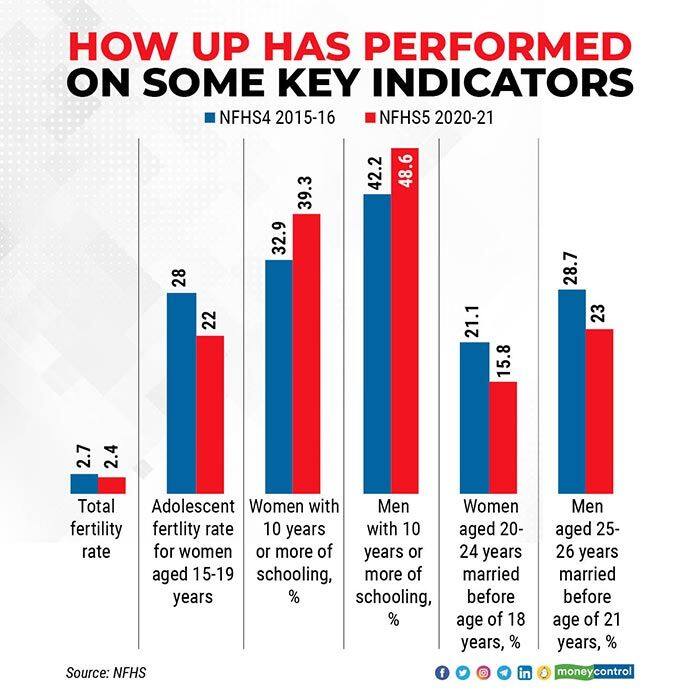



A drop in the total fertility rate (TFR) of women in Uttar Pradesh to 2.4 in 2020-21, months before the state government proposed to bring a law to curb large families, proves that population growth can be slowed without laws to penalise people who have more than two children.
The Yogi Adityanath government had proposed in July 2021 to bring laws to bar people who had more than two children from contesting local body elections, applying for jobs and accessing various subsidies. The Assam government had also proposed a similar move.
The newest set of data from the National Family Health Survey (NFHS) released this week show that population growth has substantially decelerated in Uttar Pradesh, with the TFR for urban areas falling to 1.9 percent. A TFR of 2.1 is considered as the population replacement rate. In the rural areas, the rate was 2.5.
The survey suggests that the fall of TFR from 2.7 in 2015-16 was an outcome of significant improvements achieved on various social indicators, chiefly education and health. More years of school education, in particular, is considered effective in slowing population growth.
The proportion of women in the reproductive age group of 15-49 who had at least 10 years of education rose 6.4 percentage points between 2015-16 and 2020-21. Nearly 40 percent of women in this age group had completed ten or more years of school, according to the latest survey. A similar rise was also seen for the male cohorts, and so nearly 50 percent of males had ten years or more of school education.
Longer years of school education possibly explains the more than five percentage drop in the proportion of females in the age group of 20-24 who were married before they were 18 years old and males aged 25-29 who were married before they were 21 years old.
Delayed marriages would also be the reason why the adolescent fertility rate dropped to 22 from 28 in 2015-16. Adolescent fertility rate refers to the number of live births per 1,000 females in the 15-19 age group. The rate for urban areas was far lower than for rural areas.
 The increased use of contraceptives for family planning would also have helped lower the TFR of the state. The proportion of women in the reproductive age who used some form of family planning method rose by 17 percent points in the five years between the iterations of the survey. The use of condoms and pills increased sharply.
The increased use of contraceptives for family planning would also have helped lower the TFR of the state. The proportion of women in the reproductive age who used some form of family planning method rose by 17 percent points in the five years between the iterations of the survey. The use of condoms and pills increased sharply.
Improvement in healthcare and access to healthcare, particularly ante-natal and post-natal care, may have helped reduce infant and child mortality rates. The proportion of women getting ante-natal and post-natal care increased by 16-18 percentage points in the five years. A similar increase was also seen in the proportion of institutional births in the state.
All that together with improved immunisation of infants and young children has reduced infant and child mortality rates in the state. Despite the progress made, much more needs to be done to reduce the loss of lives of new-born and children below the age of 5.
The government has gone silent on the proposed law. The NFHS shows such laws are not needed to slow population growth.
Discover the latest Business News, Sensex, and Nifty updates. Obtain Personal Finance insights, tax queries, and expert opinions on Moneycontrol or download the Moneycontrol App to stay updated!
Find the best of Al News in one place, specially curated for you every weekend.
Stay on top of the latest tech trends and biggest startup news.